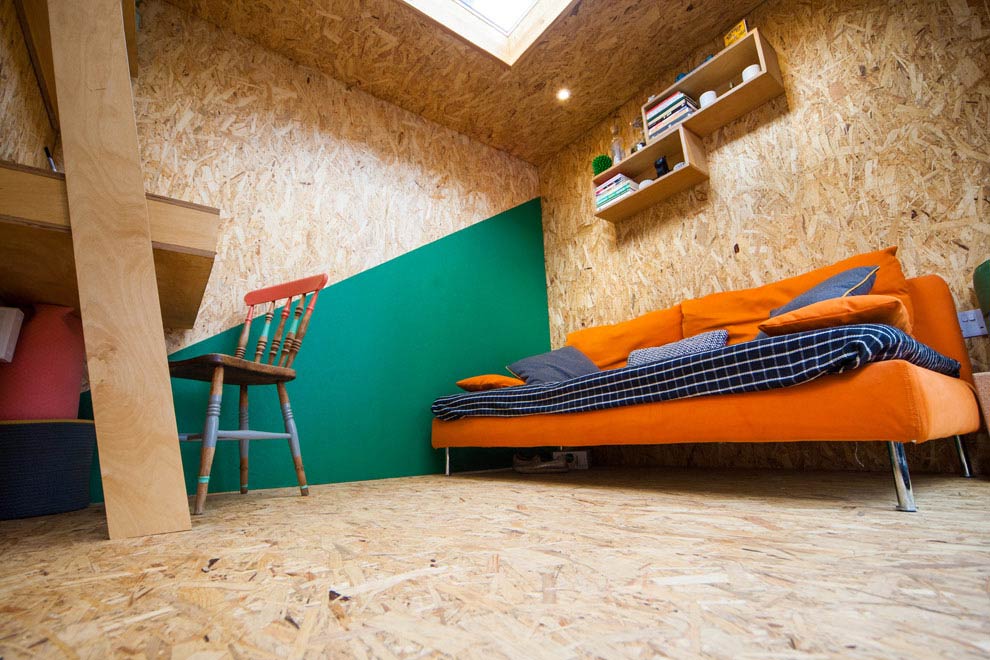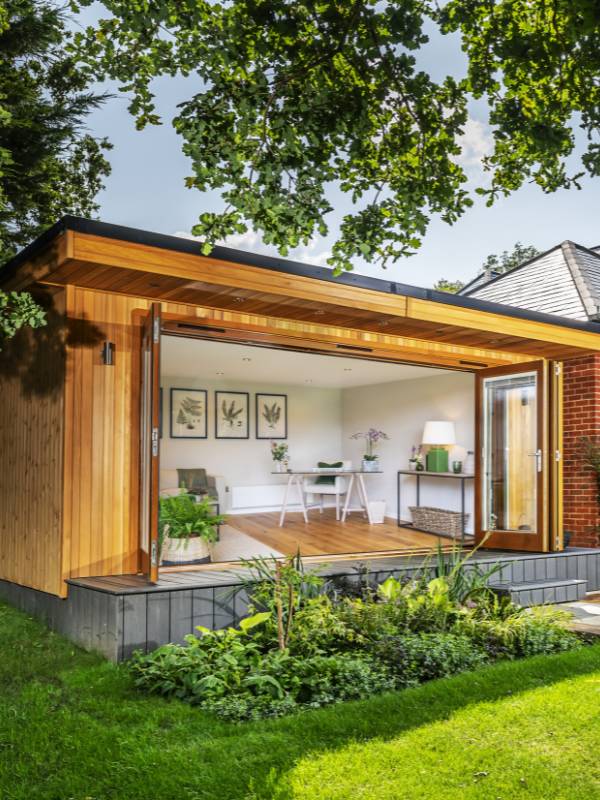Good Advice For Planning Permission For Garden Offices
Good Advice For Planning Permission For Garden Offices
Blog Article
What Kind Of Restrictions Do You Have For Garden Rooms Or Other Spaces.?
When considering the construction of garden rooms outhouses, conservatories, extension of the garden office or extensions certain size limitations usually determine whether you require planning permission. Here's an overview of some commonly used size-related requirements you have to take into consideration when seeking permission to plan.
If you are planning to build a detached house, you will need to get permission if your proposed construction and any existing outbuildings exceed 50% of the total surface of the land around the original home.
Height limitations:
Constructions with a single story: The maximum height of the eaves should not exceed 2,5 meters. For roofs that have dual pitches, the height cannot exceed 4 meters.
The maximum height of structures that are not more than 2 meters high is 2.5 meters.
Floor Area:
The building code may still be required for structures that are larger than 30 square meters even if planning permission isn’t required.
Proximity to Boundaries:
If the structure is less than 2 meters from a boundary it is usually required to apply for planning permission for structures with a height more than 2.5 meters.
Building Usage
The intended use of the room, while not necessarily a limitation in terms of size, may affect whether or not planning permission is required. If the intended use of the space is residential, or a commercial space, planning approval is likely to be required.
Permitted Development Rights:
Permitted Development Rights (which permits certain kinds of work to be completed without requiring full plans) are subject to specific size restrictions and restrictions. These rights could vary based on whether or not the property falls within a conservation district.
Conservatories and Extensions:
The maximum depth for a one-story rear extension is usually 4 meters in detached houses and 3 meters for semi-detached or terraced homes. Under the Neighbour consultation plan, these depths could be raised to 8 metres and 6 meters respectively.
The maximum height of an uni-story rear extension cannot exceed 4 metres.
Side Extensions
Side extensions' width cannot be greater than half of the width of the home's original, and the height can't exceed 4 meters.
Volume restrictions:
In some areas (like conservation areas or Areas of Outstanding Natural Beauty) any addition that expands the size of the original house by more than 10 percent or 50 cubic metres (whichever is greater) might require planning permission.
Front Extensions
Extensions that extend past the front of the original house that faces the road may require planning permission.
Always check with the local planning authority before confirming any regulations, since they could differ based on the local council you reside in and the specific requirements of your property. It's essential to verify with the local planning authority since rules may differ based on the council's policies and conditions of the property. Read the best armoured cable depth regulations uk for blog examples including costco garden room, garden room planning permission, insulated garden rooms, out house for garden, myouthouse, garden office, costco garden buildings, 4m x 4m garden room, garden room permitted development, myouthouse and more.
How Tall Can You Build An Outdoor Space?
When constructing garden rooms, conservatories outhouses, gardens offices or extensions, limitations on height will determine if planning permission is required. These are the most important elements to take into consideration when planning height:
If the roof is pitched in two pitches (such as on Gables) The maximum height of a detached extension or outbuilding should not exceed four meters.
Other types of roof (flat or single-pitched) cannot exceed three meters in height. ) The height of the roof must not exceed 3 meters.
Proximity to borders
The maximum height is 2.5 meters in the event that the structure is within 2 metres of the property boundary. This also applies to similar outbuildings, such as garden rooms, sheds or other similar structures.
The height of the eaves:
The maximum height for the eaves (the space between the smallest part of the roof and eaves) must not exceed 2.5 meters for any building.
Extensions, conservatories and other types of conservatories:
For an extension of a single story, the height must not be more than 4 meters. This includes the roof and any walls that are parapet.
Side Extensions
The side extensions can only be 4 meters tall and can not surpass the width of half of the original house.
Special Roofs
Structures with a flat roof are generally only allowed to be up to a height of 3 meters.
Additional restrictions on designated areas:
In conservation areas (AONB), Areas of Outstanding Natural Beauty or other designated areas, height restrictions will likely to be stricter and planning permission may be required for structures that fall within the permitted development right.
Buildings at National Parks
National Parks, like designated areas, may have additional height limitations that require approval for planning.
Roof Design
You should consider the height (excluding chimneys, antennas, etc.). It is important to consider. Planning permission may be required if the highest elevation of the structure is higher than the building limit that is permitted.
The impact on neighbours:
Even if the structure is within permitted height limits however, planning permission could be required if the structure significantly affects privacy, light, or view of neighboring properties.
Maximum Height All-Over:
The height limit of a structure is 4 meters. For instance, a backyard with a roof that is double pitched is not allowed to be taller than 4 meters at its tallest point.
Decking or Platforms
Decking and platforms connected to the structure can't raise the floor by more than 0.3 m in order to avoid requiring planning permission.
It's always best to inquire with the local authority responsible for planning to determine specific rules and any recent changes to regulations. Even if your project is within the development rights that are permitted in general application, specific local variations and conditions may require planning permission. View the top rated garden outhouse for site tips including insulated garden buildings, outhouse, garden rooms in St Albans, gym outhouse, conservatories and garden rooms, costco garden buildings, what size garden room without planning permission, garden rooms in St Albans, costco outbuildings, garden room permitted development and more.
In Terms Of Design And Appearance, What Sort Of Planning Permits Do You Require For Garden Rooms?
If you are planning to build outdoor spaces, garden rooms, conservatories, office or extension, the appearance and design will be a key factor in determining whether you need planning permission. Here are the most crucial factors to take into consideration.
If the proposed structure is within the development rights that are permitted for your property, planning permission might not be necessary. There are a few aesthetic and design requirements that must be fulfilled.
Size and Scale:
The scale and size of the new structure should be in proportion to the property's existing size and the surrounding buildings. Planning approval is required for structures that are larger than the limits outlined in permitted development rights.
Mass and Height
The scale of existing structures and properties adjacent to them should be reflected in the height and massing. Planning permission is usually required for buildings that are over height limits or that are out of scale with surrounding buildings.
Materials and Finishes:
The materials used and the finish should complement the existing property and surrounding buildings. The material chosen might need approval from the planning authority in the event that they are not in style with the buildings around them.
Design Harmony
The style of the proposed structure must be compatible with the design and style of the property or buildings surrounding it. The style of the new structure must be in harmony with the local characteristics and appearance.
Roof Design
The roof's design must be harmonious with the structure of the building you're renovating as well as the structures around it. A planning permit could be needed for a design that is not in line with the local appearance or character.
Fenestration (Windows and Doors):
The layout and design of the door and windows must be in harmony with the house and the surrounding area. The proposed fenestration may need planning approval if it is not in keeping the local character and look.
Treatment of Facades
The treatment of the facade must be in harmony with the surrounding properties as well as existing buildings. If the proposed treatment of the facade is not in keeping with the local appearance and design, planning permission could be required.
Landscaping and Surroundings
The landscaping should be in harmony with the existing properties and buildings. If the landscaping doesn't fit with the local appearance and style the planning permission might be required.
Visual Impact:
The visual impact of the new structure's visual impact on the surrounding landscape should be minimal. The proposed structure could require approval for planning if it creates an adverse aesthetic impact on the surroundings.
Heritage and Conservation Areas
If a property located in an area designated as an historic site or to preserve its natural beauty, the design and aesthetic criteria could be more strict. If a new structure is not in compliance with these requirements, planning permission might be required.
Architectural and Planning Guidelines:
Local planning authorities typically have particular design and appearance guidelines to be adhered to. Planning permission could be required in the event that a proposed building is not in line with these guidelines.
The appearance and design of the space is often what determines the likelihood of planning permission being granted for conservatories or garden rooms. It is crucial to check with your local authority for planning at an early stage of the process of planning to ensure you're complying with local guidelines regarding design and appearance, and to determine if planning approval is required. Check out the top rated garden outhouses for more info including outhouses, garden room permitted development, outhouse builders, do i need planning permission for a garden room with toilet, what size garden room without planning permission, how to lay decking on soil, garden rooms in St Albans, garden rooms, insulated garden rooms, garden room and more.